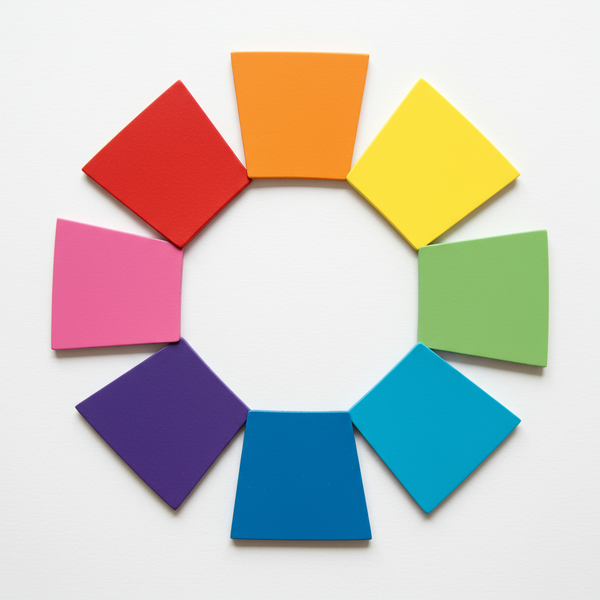The Difference Between Introverted & Extroverted MBTI Types

In the vast landscape of personality frameworks, the Myers-Briggs Type Indicator (MBTI) stands out as one of the most widely recognized tools for self-discovery and understanding interpersonal dynamics. At its core, the MBTI categorizes individuals across four key dichotomies, and arguably the most fundamental and often misunderstood of these is the difference between Extroversion (E) and Introversion (I). This distinction, deeply rooted in Carl Jung's psychological types, describes where individuals primarily focus their energy and how they interact with the world around them.
Often, the terms "introvert" and "extrovert" are casually tossed around, frequently conflated with shyness or gregariousness. However, the MBTI, and Jung's original theory, offer a far more nuanced understanding than these simplistic interpretations suggest. It’s not about how much you talk or how many friends you have; it’s about a profound difference in the source of one's mental and emotional energy, and the primary direction of one's attention and interest.
To truly grasp the essence of these two fundamental attitudes, we must delve beyond superficial behaviors and explore the underlying psychological processes that define them. Understanding this core difference is not only vital for accurate self-typing but also immensely valuable for fostering empathy, improving communication, and building more effective relationships in both personal and professional spheres.
Unsure which path aligns with your unique strengths? Get a career reading from Celeste to discover optimal careers for your Myers-Briggs type.
Understanding Carl Jung's Original Concepts
The concepts of introversion and extroversion were first introduced by Swiss psychiatrist Carl Jung in his influential 1921 work, Psychological Types. For Jung, these were "attitude-types" that described an individual's habitual orientation towards the world. He posited that the psyche has two fundamental directions of movement: outwards, towards the external world of objects and people, or inwards, towards the subjective world of thoughts, feelings, and reflections.
Jung defined extroversion as an outward-turning of psychic energy. An extrovert's primary interest and attention are directed towards the objective world – external things, people, and activities. They are drawn to the concrete, the observable, and the socially engaging. Conversely, he defined introversion as an inward-turning of psychic energy. An introvert's primary interest and attention are directed towards their subjective, inner world – their thoughts, ideas, feelings, and fantasies. They are more concerned with their internal responses to external events than with the events themselves.
It's crucial to note that Jung believed everyone possesses both introverted and extroverted tendencies. However, one attitude is typically dominant and conscious, while the other is subordinate and often unconscious. The MBTI built upon this foundational idea, making it more accessible by focusing on how these attitudes manifest in daily life, particularly regarding energy levels.
The MBTI's Interpretation: Where We Get Our Energy
While staying true to Jung's original framework, the MBTI refines the definition for practical application, focusing heavily on the concept of energy. In the context of the MBTI, the E or I preference indicates the dominant way an individual prefers to direct and receive energy.
Extroverts (E) are individuals who are energized by interacting with the external world. They gain energy from social interaction, external stimulation, group activities, and engagement with people and things. Conversely, they can feel drained or restless if they spend too much time in solitude or without external engagement. For an Extrovert, the external world is a source of invigoration.
Introverts (I), on the other hand, are energized by their internal world. They gain energy from solitude, quiet reflection, deep thought, and internal processing. They tend to find too much external stimulation or social interaction draining, and need alone time to recharge and regain their energy. For an Introvert, the internal world is a source of replenishment.
This "energy source" distinction is the most critical differentiator in the MBTI framework. It's not about being "social" or "anti-social," but about the fundamental process of psychological self-renewal.
Behavioral Manifestations of Extroversion
The preference for Extroversion often translates into observable behaviors and preferences:
- Social Engagement: Extroverts typically enjoy and seek out social gatherings, group activities, and lively environments. They are often the first to initiate conversations or meet new people.
- Thinking Out Loud: They tend to process their thoughts and ideas externally, often by talking them through with others. This "think-aloud" style helps them clarify their thoughts.
- Action-Oriented: Extroverts often prefer to act first and then reflect on the experience. They are drawn to hands-on activities and direct engagement.
- Breadth of Relationships: They tend to have a wider circle of acquaintances and enjoy being connected to many different people.
- External Focus: Their attention is naturally drawn to what's happening around them – new events, people, and opportunities. They are often energized by external stimuli.
In a team setting, an Extrovert might be the one to speak up immediately, brainstorm aloud, and feel more comfortable presenting to a large group.
Behavioral Manifestations of Introversion
Introversion also manifests in distinct behavioral patterns:
- Quiet Reflection: Introverts prefer quieter, less stimulating environments. They are more likely to enjoy solitary activities like reading, writing, or deep contemplation.
- Internal Processing: They typically process their thoughts and ideas internally, reflecting deeply before sharing their conclusions. They prefer to think to speak, rather than speak to think.
- Thoughtful Action: Introverts often prefer to reflect and plan before taking action. They consider various possibilities internally before committing to a course of action.
- Depth of Relationships: They tend to prefer deep, meaningful relationships with a select few rather than a wide network of acquaintances.
- Internal Focus: Their attention is naturally drawn inward, to their thoughts, feelings, and internal experiences. They can become overstimulated by too much external input.
In a team, an Introvert might listen attentively, contribute after careful consideration, and prefer to share their well-formed ideas in a smaller setting or in writing.
Debunking Common Misconceptions
It is paramount to address persistent misconceptions that obscure the true meaning of introversion and extroversion:
- Introversion is NOT Shyness: Shyness is a fear of social judgment and can affect anyone, regardless of their E/I preference. An introvert might be perfectly confident in social situations but simply find them draining and prefer less of them. Conversely, an extrovert can be shy but still seek external stimulation to recharge.
- Extroversion is NOT Superficiality: While extroverts may enjoy a wider array of social interactions, this does not imply a lack of depth or genuine connection. They can form deep bonds just as readily as introverts, albeit sometimes in a different manner or pace.
- Neither is "Better": One preference is not superior to the other. Both introverts and extroverts bring unique strengths and perspectives to the world, and both are essential for a balanced society. Problems often arise when one type fails to appreciate the value of the other.
- The Ambivert: While some individuals feel they exhibit qualities of both, in the MBTI framework, you ultimately have a dominant preference for how you direct your energy. "Ambivert" might describe behavioral flexibility, but the underlying energy source remains consistent with either E or I.
Understanding these distinctions helps move beyond stereotypes and appreciate the genuine psychological differences.
The Role of Cognitive Functions
To further deepen our understanding, it's important to briefly touch upon the MBTI's cognitive functions. The "E" or "I" in an MBTI type (e.g., ENTP vs. INTP) doesn't just describe general energy direction; it specifically refers to the orientation of an individual's dominant cognitive function.
- For an Extroverted type (E), their dominant function is extraverted. For example, an ENTP's dominant function is Extraverted Intuition (Ne), meaning their primary way of perceiving possibilities and connections is directed outward. An ESTJ's dominant function is Extraverted Thinking (Te), meaning their primary way of organizing and making decisions is directed toward the external world.
- For an Introverted type (I), their dominant function is introverted. For example, an INTP's dominant function is Introverted Thinking (Ti), meaning their primary way of analyzing and understanding is directed inward, focusing on internal consistency. An ISFJ's dominant function is Introverted Sensing (Si), meaning their primary way of experiencing and recalling details is rooted in their internal subjective experience.
This connection means that the E/I preference permeates not just social interaction but also how one fundamentally processes information, makes decisions, and experiences the world. An extraverted thinker (Te) might seek external data and logical frameworks to make decisions, while an introverted thinker (Ti) might rely more on their internal logical consistency and subjective analysis.
Leveraging Your Type for Growth and Understanding
Recognizing your own preference and that of others is incredibly empowering. For introverts, it means understanding the necessity of solitude for recharging, and not feeling guilty for declining social invitations when they need quiet time. For extroverts, it means recognizing their need for external stimulation and interaction, and creating opportunities for it without over-scheduling or overwhelming others.
In relationships, this understanding can reduce friction. An introvert might understand why their extroverted partner needs to socialize more, and an extrovert might appreciate an introvert's need for quiet reflection. In the workplace, designing environments that cater to both – with collaborative open spaces and quiet zones for concentration – can significantly boost productivity and employee well-being.
Ultimately, both introverts and extroverts can grow by developing their less preferred attitude. An introvert can learn to engage more outwardly when the situation demands, and an extrovert can cultivate periods of quiet reflection to deepen their internal world. The goal is not to change who you are, but to understand your natural inclinations and leverage them effectively, while also developing a degree of flexibility.
The distinction between introversion and extroversion is a cornerstone of the MBTI framework, providing profound insights into how individuals direct their energy, engage with their environment, and recharge their psychological batteries. Far from being simple labels for social behavior, these preferences describe fundamental attitudes towards life, rooted in Carl Jung's original psychological types. By moving beyond common misconceptions and appreciating the unique strengths and needs of both types, we can foster greater self-awareness, enhance our relationships, and create more inclusive environments that celebrate the rich diversity of human nature. Understanding this dichotomy is not about defining limits, but about illuminating paths to personal effectiveness and mutual respect.




